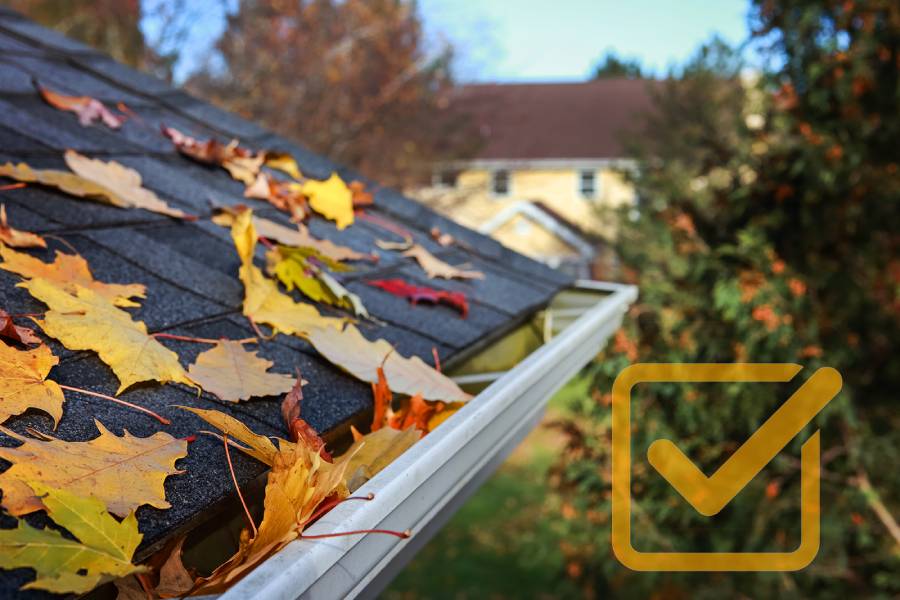
Winter Prep Checklist for Vermont and New Hampshire Homes
Use this checklist to get ahead of the cold weather challenges for homes throughout New Hampshire and Vermont. Prepare your home for the seasonal changes ahead.
- Plant bulbs for springtime flowers.
- Cover and/or store outdoor furniture.
- Winterize summer lawn equipment and prepare it for seasonal storage.
- Remove window screens and (if applicable) put up storm windows and doors.
- Replace damaged weather stripping and door sweeps.
- Repair damaged caulking on windows.
- Reverse ceiling fans (clockwise during winter and counterclockwise during summer).
- Clean debris from outdoor heating, ventilation, and air conditioning (HVAC) units.
- Cover outdoor HVAC unit grates to prevent debris from accumulating. (Cover the top grate with plywood and secure it with bricks, or cover it with a tarp, if recommended by the manufacturer.)
- Inspect whole-house humidifier systems. (Check the drain lines, valves, fans and water panels.)
- Clean gutters and downspouts.
- Check and trim dead or damaged tree limbs.
- Have your chimney inspected and cleaned.
- Stock up on firewood.
- Clean gas fireplaces or have them professionally serviced. (Check the gas ignition, vacuum the interior, inspect ceramic logs for damage and perform other maintenance recommended by the manufacturer.)
- Check home heating oil or propane levels. (Order ahead to lock in fuel rates and deliveries for the season.)
- Check smoke and carbon monoxide detectors.
- Check fire extinguisher expiration dates and replace extinguishers, if necessary.
- Change the batteries in flashlights and weather radios (or invest in non-battery options, such as hand-crank versions).
- Assemble a survival kit for power outages and inclement weather. (Make sure you have kits for home and travel.)
- Clean your clothes dryer exhaust duct and vacuum lint buildup around the outside of the dryer.
- Visually inspect electrical outlets for damaged or loose-fitting covers (they can be a fire hazard).
- Inspect and service cold-weather tools such as shovels, leaf blowers, rakes and snowblowers.
- Inspect walkways, railings and driveways for any safety concerns.
- Stock up on rock salt, sand or non-clumping litter to prevent slipping on icy walkways.
- Disconnect garden hoses and store them.
- Manually shut off the water supply to exterior faucets and drain the water lines to prevent freezing.
- Winterize your lawn sprinkler system using the manual, automatic or blowout draining method. (Consult your manufacturer or installation expert for assistance with your system.)
- Cover exterior water faucets and insulate exposed pipes using foam pipe insulation.
- Have the septic system inspected and make sure all outdoor pipes are insulated or below the frost line.
- Prepare and cover swimming pools. (Remove accessories, deep clean the pool, bleed water lines or disconnect service hoses, and adjust water chemistry.)
- Winterize hot tubs if not used during the winter. (Use a tight-fitting cover for safety, bleed the water lines, jets and other components, and unplug the unit.)
- Keep hot tubs running at optimal levels if used through the winter. (Use a tight-fitting cover for safety and water heat retention, circulate the water often, use a ceramic heater to keep parts from freezing and insulate the hot tub shell.)
- Inspect your backup generator. (Check the oil, filters, spark plugs, and battery and fuel levels.)
- Maintain solar panels according to manufacturer recommendations. (Adjust the tilt for the winter sun position, inspect the power cells, ensure proper battery storage temperatures and other manufacturer suggestions.)
This content is for informational purposes only and not for the purpose of providing professional, financial, medical, or legal advice. You should contact your licensed professional to obtain advice with respect to any particular issue or problem.
Copyright © 2022 Applied Systems, Inc. All rights reserved.

